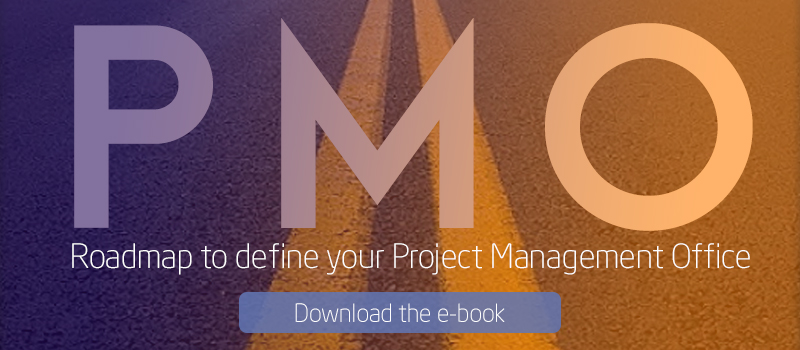 Project Management Offices (PMOs) organize and economize resources by establishing protocols and documentation that normalize, consolidate and centralize project management.
Project Management Offices (PMOs) organize and economize resources by establishing protocols and documentation that normalize, consolidate and centralize project management.
When implementing a PMO it is necessary to recognize the inadequacies of current project management capabilities, what needs to change and how a PMO can bring about this change. However, there is no one recommendation to effectively manage the change. The goal of a PMO depends greatly on the context of the organization as well as various factors such as the macro economy, the size of the organization and the capacitation of project management staff.
Nevertheless, the most important factor will be how well the PMO responds to system failures. Naturally, every situation will be different, and therefore the solutions will have to be adapted accordingly.
Although it is risky to offer recommendations on such circumstantial cases (and to accept them!) categorizing the different forms of PMO to suit the situation can be beneficial. A classic typology of the different forms of PMO is in William Casey and Wendi Peck’s "Choosing the right PMO setup" article (2001). Casey and Peck begin by recognizing that the PMO is often used as a panacea – but there is no universal medicine.
His typology is based on three metaphors: a PMO can be a "weather station" a "control tower" or a "resource pool".
Type 1: The "weather station" PMO
Sometimes, customers feel that they are poorly informed about the on-goings of the project. Their perception is that they are investing time, money and hope into the project without detailed information.
It’s also common for clients to have ordered several projects simultaneously and then receive differing information about the progress of each project, in different formats, with different styles and types of data. Streamlining decisions based on such heterogeneous information is rough.
The solution to this problem is to implement a PMO whose mission is to provide objective, well-structured, and comparable factual information. By providing templates for reports, information can be presented uniformly and predictably, allowing for the efficient extraction of information.
Example customer concerns that the “weather station” PMO must answer are:
-
What is the current status of the project? To what degree have the initial objectives been met?
-
What has been invested or how much has the dedicated capital contributed? Is the planned budget sufficient? How much of the total initial budget has already been spent?
-
What are the main risks or problems that may occur during project implementation?
However, this type of PMO is merely informative, which means they do not have the authority to coordinate or to make decisions. They serve purely to inform any interested party and the information may assist the Project Managers to make better decisions.
If you think it is necessary to implement a PMO that makes decisions and solves project issues, you should opt for another model.
Type 2: The "control tower" PMO
This type of PMO can be used in combination with the previous model. In fact, both may construct a suitable supplementation in which the first model identifies and monitors problems, whereby the additional functions of the PMO to ensure that the project complies with established standards.
The functions of this type of PMO are:
1. Setting standards for project management. The standards serve as a methodological reference for the project managers. They must adapt as much as possible, whilst also having a certain degree of flexibility to respond to market changes in real time. The establishment of standards also includes the following aspects:
-
Setting the desired level of risk.
-
The organization of HR that are responsible for carrying out the project.
-
The distribution of tasks.
-
Channels of communication and information that will keep the team, management as well as customers updated.
2. The choice of methodologies for the measurement and analysis of results. It must establish quantitative systems to monitor project progress in real time in order to detect any deficiencies and to take corrective action to minimize the impact on the initial plan.
3. Compliance and rising standards. The constant application of corrective measures can be adjusted in the initial plan in order to meet the established standards. Depending on the maturity of the PMO and the degree of compliance of the organization, it may also be important to review the standards from a new perspective.
Naturally, when the degree of compliance is low, it may be beneficial to review the standards "downward" to bring them to a more realistic level.
Type 3: The "resource" PMO
This third type PMO usually occurs in very large companies where a high degree of specialization is required and where it can mobilize human resources to new projects with relative ease.
For example, a project manager may be assigned to a project, but does not have the desired skill set to manage the project. In this case it is necessary to have a location where all project managers are organized as if they were products in a catalog. When you need a Project Manager who is an expert in a particular field of knowledge, you can easily search for and find specific experts that meet the requirements. This ensures that the project manager has the necessary training and experience to match the desired quality and, therefore, ensures the best managers are on the appropriate projects.
This interpretation of the PMO does not guarantee that the right projects are carried out or that they are carried out in the best way; only that the elected Project Managers are the most suitable for the project. This is a good foundation on which to maintain success, along with other factors such as good communication, and a skilled and motivated workforce, etc.
Once the appropriate project manager is selected, they must be allowed enough freedom to perform their work as they deem appropriate.
So what is the best type of PMO?
As explained previously in this article, each company and each project has different goals and aspirations. The type of PMO that will be best suited for your organization will depend on the maturity of a company, its scope and your needs. You may find different aspects from different types of PMO are what you need, and draw inspiration to tackle change freely.
This is the first of a series of articles of posts on Project Management Offices. The next three articles will focus on each of the PMO models explained above.

